In December 2000 a story appeared in several British newspapers, including The Guardian, about a man in New York, George Turklebaum, who had been dead at his office desk for five days . . . and no one noticed! Coworkers at “the publishing-services company” often passed by his cubicle and said hi without it registering that he hadn’t responded. “We just assumed that George was taking time to go over the text very carefully, as he always did,” said his boss.
 Anything sound odd to you about that story? Anything odd besides a man being dead in an office for five days without anyone noticing?
Anything sound odd to you about that story? Anything odd besides a man being dead in an office for five days without anyone noticing?
Anything odd like, “Why did British papers report about a man being dead in New York instead of New York papers?”
Or odd like, “Why was the publishing-services company not named?”
Or odd like, “Wouldn’t a body start stinking to high heaven long before five days?” (Spoiler alert: it would.)
You’ve probably heard this story or variations of it which have circulated for at least the last twenty years. The truth is, it was first published by an American tabloid, the Weekly World News, which also publishes such important stories as “Newest U.S. Judge is 5-Years Old,” and “The Yeti Is Behind Cryptocurrency,” and former Vice President “Mike Pence Is a Cyborg.”* You get the idea.
The only source of this report for all the British newspapers, even for one as highly reputable as The Guardian, was the tabloid. There was no other corroborating evidence.
When David Mikkelson did some research at Snopes, he found that no one named George Turklebaum was listed in the Social Security Death Index, and the New York Medical Examiner’s office had no information on the death of anyone named Turklebaum for 1999 or 2000.**
Yet so many of us hear stories like this one about the dead office worker, and we think, “Weird. But I can actually see that. Don’t we all feel like nameless cogs in a machine sometime?”
We take it in, often uncritically. Yet right on the surface are aspects that should make us question what’s going on. Not just a rotten corpse, but the lack of specifics (like the company’s name) and of sources (like a police report).
The key word is uncritically. We don’t stop to question. Thinking critically about what we read or hear doesn’t mean being critical in the sense of finding fault. It means asking questions.
To some extent it doesn’t matter what questions we ask. Almost any question will do. The point is to ask a question and not stay on autopilot.
The question can come at the beginning, the middle, or the end. It can be profound or prosaic. Regardless, doing so engages us. We become actors in the drama, dialogue partners in the conversation, friends in the relationship. We are not merely passive receptacles into which entertainment, advertisements, opinions, information, or disinformation are poured.
Many people (including those we agree with) want to sway us for their own purposes. Nurturing the habit of asking questions about what we hear or read can, among other benefits, provide us with a vaccine against the virus of being manipulated by others.
—
*These are actual headlines from https://weeklyworldnews.com/, accessed January 28, 2021.
**David Mikkelson, “Man Dies at Desk,” Snopes, https://www.snopes.com/fact-check/working-stiff/. See also https://www.truthorfiction.com/deadatwork/.
Image by David Mark from Pixabay

 We rotate hosting our get-togethers, with the hosts selecting the book and leading the discussion. Without trying, our books (and occasional movies) have been split almost evenly between fiction and non-fiction. We’ve enjoyed history, science fiction, mystery, memoir, classics, and current best-sellers.
We rotate hosting our get-togethers, with the hosts selecting the book and leading the discussion. Without trying, our books (and occasional movies) have been split almost evenly between fiction and non-fiction. We’ve enjoyed history, science fiction, mystery, memoir, classics, and current best-sellers. I prefer our system of making selections over voting as a group which can result in choosing everyone’s second or third choice. That could also keep the range much more narrow and perhaps less challenging to our own tastes or viewpoints. I enjoy being stretched by the personal selections of my friends.
I prefer our system of making selections over voting as a group which can result in choosing everyone’s second or third choice. That could also keep the range much more narrow and perhaps less challenging to our own tastes or viewpoints. I enjoy being stretched by the personal selections of my friends. Today we live in what Tom Wolfe called the “Me Generation” and what David Brooks labeled in The Road to Character as the age of “the Big Me.” Yet, contrary to popular opinion, our sinful nature is, as Chesterton once observed, the only Christian doctrine that is empirically verifiable.*
Today we live in what Tom Wolfe called the “Me Generation” and what David Brooks labeled in The Road to Character as the age of “the Big Me.” Yet, contrary to popular opinion, our sinful nature is, as Chesterton once observed, the only Christian doctrine that is empirically verifiable.*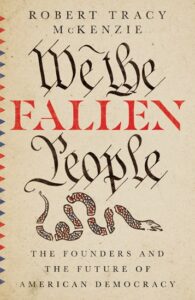

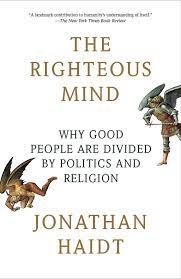
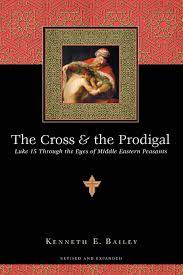
 Further, he acts as his own intermediary. Mediators are common in such cultures. Two people who are at odds do not confront each other directly lest one loose face. The father took this risk of rejection. Indeed, having been the grievously injured party, custom would require that the father wait and aloofly receive his groveling son—which is exactly what the son expects. The father again sets aside his honor for the prospect of joyful reconciliation.
Further, he acts as his own intermediary. Mediators are common in such cultures. Two people who are at odds do not confront each other directly lest one loose face. The father took this risk of rejection. Indeed, having been the grievously injured party, custom would require that the father wait and aloofly receive his groveling son—which is exactly what the son expects. The father again sets aside his honor for the prospect of joyful reconciliation.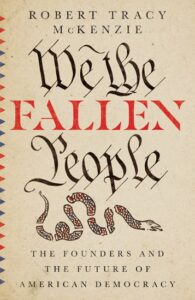
 While those of us who are committed Christians are clearly called to support the causes of justice, this should not be at the cost of bearing witness to the kingdom. Indeed, many conservative Christians claim that the most important thing they can do is spread the gospel of Jesus Christ. Yet they seem quite willing to sacrifice that on the altar of political power.
While those of us who are committed Christians are clearly called to support the causes of justice, this should not be at the cost of bearing witness to the kingdom. Indeed, many conservative Christians claim that the most important thing they can do is spread the gospel of Jesus Christ. Yet they seem quite willing to sacrifice that on the altar of political power. Another problem he spotted is also eerily familiar. Elected officials regularly offered simplistic answers which cannot hold in the face of complex problems. “An idea that is clear and precise even though false,” Tocqueville observed, “will always have greater power in the world than an idea that is true and complex” (p. 194). That is so whether the ideas come from the right or the left.
Another problem he spotted is also eerily familiar. Elected officials regularly offered simplistic answers which cannot hold in the face of complex problems. “An idea that is clear and precise even though false,” Tocqueville observed, “will always have greater power in the world than an idea that is true and complex” (p. 194). That is so whether the ideas come from the right or the left. Alexis de Tocqueville’s classic
Alexis de Tocqueville’s classic  When we write, we want to answer the questions our audience has, not the questions we think they should have. But there is a balance because taking this approach can result in talking down to readers. Or the content can come off as one-dimensional because we are not writing what we are passionate about. As I say, it’s a balance.
When we write, we want to answer the questions our audience has, not the questions we think they should have. But there is a balance because taking this approach can result in talking down to readers. Or the content can come off as one-dimensional because we are not writing what we are passionate about. As I say, it’s a balance.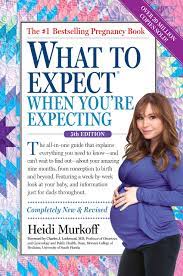
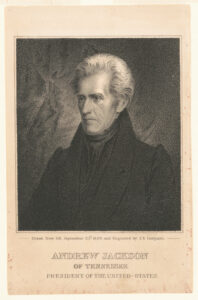 First, he “ran against Washington DC,” proclaiming himself the outsider who could fix a broken system. Second, he developed a populist strategy which many have followed (both liberals and conservatives) ever since.
First, he “ran against Washington DC,” proclaiming himself the outsider who could fix a broken system. Second, he developed a populist strategy which many have followed (both liberals and conservatives) ever since.